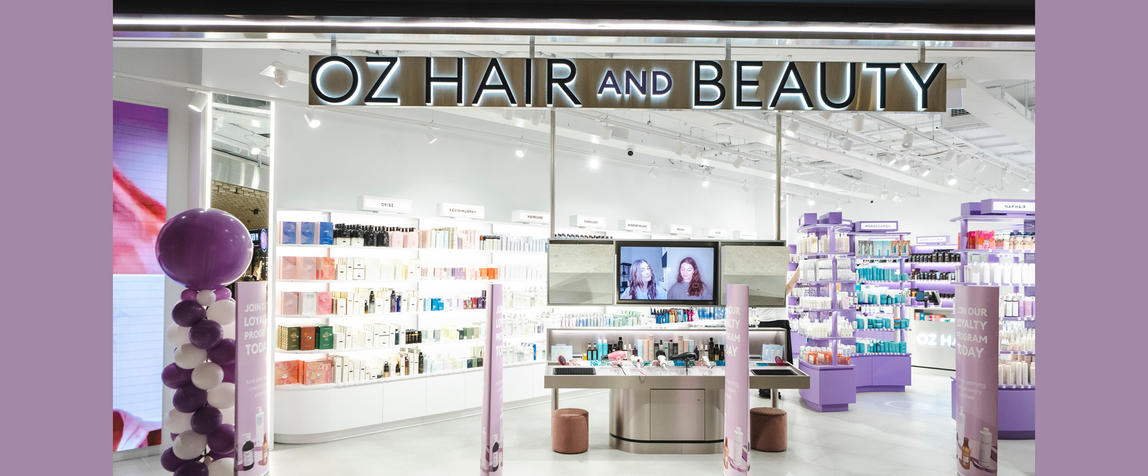This page may contain affiliate links. If you purchase through these links, we may receive a commission. This doesn't affect the opinions or assessments of our editors.
30% Off Sitewide(Exclusive) |
15% Off On Sunglasses |
15% Off Your Order |
10% Off All Orders
25% Off Your Order |
10% Off By Sign Up |
Warby Parker is no longer just a brand; it's a movement that has reshaped the eyewear industry. Since its inception in 2010, Warby Parker has managed to combine fashion, function, and social responsibility in a way that has captivated millions. This blog post will delve into how Warby Parker has evolved, its unique business model, and its impact on the eyewear market.
1. The Birth of Warby Parker
Warby Parker was born out of a simple idea: eyewear should be affordable, stylish, and accessible. The company was founded by four friends—Neil Blumenthal, Dave Gilboa, Andrew Hunt, and Jeffrey Raider—while they were students at the Wharton School of the University of Pennsylvania. They were frustrated with the high cost of eyeglasses and the lack of options available, especially for those who needed prescription glasses.
The idea was simple: eliminate the middleman, design high-quality eyewear, and sell directly to consumers. By doing so, they could offer glasses at a fraction of the price of traditional eyewear retailers, all while offering a wider variety of stylish options.
2. Business Model: Disrupting the Eyewear Industry
Traditional eyewear retailers operated on a model where consumers would pay a premium price for designer glasses, which were often marked up by as much as 1,000%. Warby Parker's direct-to-consumer business model helped eliminate the need for expensive storefronts and middlemen, resulting in a significant reduction in prices.
Additionally, Warby Parker embraced an online-first approach, something revolutionary at the time. By offering virtual try-ons and free home try-on kits, the company made buying glasses online a seamless and customer-friendly experience. Their free home try-on program, in particular, allowed customers to select five frames to try on at home for five days before making a purchase, a concept that set them apart from the competition.
As a result, Warby Parker's frames were priced at around $95 for a complete pair of glasses, which included both the frames and prescription lenses. This price was significantly lower than what consumers were used to paying at traditional eyewear stores, where frames could cost upwards of $300 or more.
3. The Warby Parker Aesthetic: Fashion Meets Function
One of the most striking aspects of Warby Parker’s rise is its emphasis on design. The founders believed that eyewear could be a fashion statement—something stylish, unique, and expressive—rather than just a medical necessity.
Their designs are modern, minimalist, and versatile. From bold, statement-making frames to more subtle and classic options, Warby Parker has something for everyone. Their eyewear collection is constantly refreshed with new styles and trends, ensuring they stay ahead of the curve.
The brand also created a loyal following by appealing to a wide range of tastes. Customers could find everything from aviators and round frames to rectangular, cat-eye, and oversized options. This variety, combined with high-quality craftsmanship, made Warby Parker glasses not just a necessity, but a way to express personal style.
4. Social Responsibility: A Commitment to Giving Back
Warby Parker's impact on the eyewear industry goes beyond style and affordability. One of the company's defining features is its commitment to social responsibility. The founders believed that business success should be paired with a strong sense of social impact.
The "Buy a Pair, Give a Pair" initiative was born out of this belief. For every pair of glasses sold, Warby Parker donates a pair to someone in need. The company has partnered with non-profit organizations around the world to distribute glasses to underserved communities, where vision care is often limited or unavailable.
Since its inception, Warby Parker has donated millions of pairs of glasses, significantly improving the lives of individuals who previously had no access to vision correction. This initiative has not only helped people see better but has also improved their quality of life by increasing educational and job opportunities.
5. Warby Parker’s Offline Expansion: The Brick-and-Mortar Stores
Though Warby Parker started as an online-only brand, it eventually expanded to include brick-and-mortar locations. This move marked a strategic shift, as the company wanted to allow customers to experience the eyewear in person before making a purchase. However, Warby Parker’s retail stores were designed with a twist—each store combines a modern aesthetic with a unique shopping experience.
The stores are often equipped with digital tablets, where customers can browse the full collection of frames, and some locations even have optometrists on-site to provide eye exams. The idea was to make buying glasses a more seamless, integrated experience, allowing customers to try on frames, get a prescription, and purchase their eyewear all in one place.
The retail experience was designed to be light and inviting, often incorporating cozy design elements and an emphasis on customer service. Warby Parker's stores, much like its online presence, aim to create a friendly, approachable atmosphere, which reflects the brand's core values.
6. Tech-Driven Innovation: Making Eyewear Even Smarter
Warby Parker has continued to innovate beyond the realm of traditional eyewear, incorporating technology into its products and services. One such development was the launch of the Warby Parker app, which allows customers to take a photo of their face and virtually try on frames using augmented reality. This helped bridge the gap between online and in-store shopping, providing a truly immersive and personalized experience for customers.
Additionally, the company introduced WPSun, a line of stylish, prescription-ready sunglasses, making it easier for customers to stay fashionable while protecting their eyes from harmful UV rays.
In 2018, Warby Parker also launched a line of smart eyewear in partnership with the audio giant, Bose. These "audio glasses" allow wearers to listen to music, take calls, and interact with virtual assistants, all while sporting a sleek and stylish frame. It’s an example of how the brand continues to push the boundaries of what eyewear can do in the age of technology.
7. Warby Parker Today: A Brand That Continues to Lead
Over a decade after its founding, Warby Parker continues to lead the way in the eyewear market. The company has expanded its product offerings beyond glasses, launching a variety of accessories, including contacts, frames, and eye care products. Their commitment to customer satisfaction, coupled with their dedication to providing high-quality, affordable eyewear, has earned them a loyal customer base.
Moreover, Warby Parker's focus on sustainability remains a key aspect of its brand. The company uses eco-friendly materials in its products, including biodegradable acetate and recycled plastic, and its carbon-neutral status speaks to its commitment to reducing environmental impact.
8. Conclusion: The Future of Warby Parker
Warby Parker’s journey from a small startup to an industry disruptor has been remarkable. Its ability to combine style, affordability, and social responsibility has not only transformed the eyewear market but also set a new standard for how businesses should operate in today’s world.
As Warby Parker continues to expand and evolve, one thing is clear: the brand’s commitment to making eyewear accessible, fashionable, and socially responsible is stronger than ever. With a focus on innovation and an unwavering dedication to customer satisfaction, Warby Parker is poised to continue shaping the future of eyewear for years to come.








